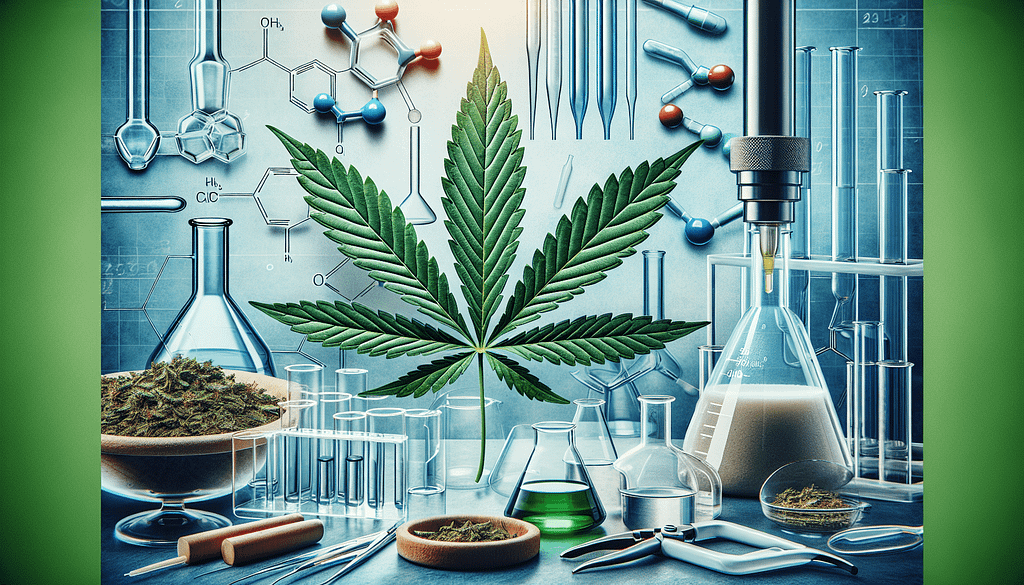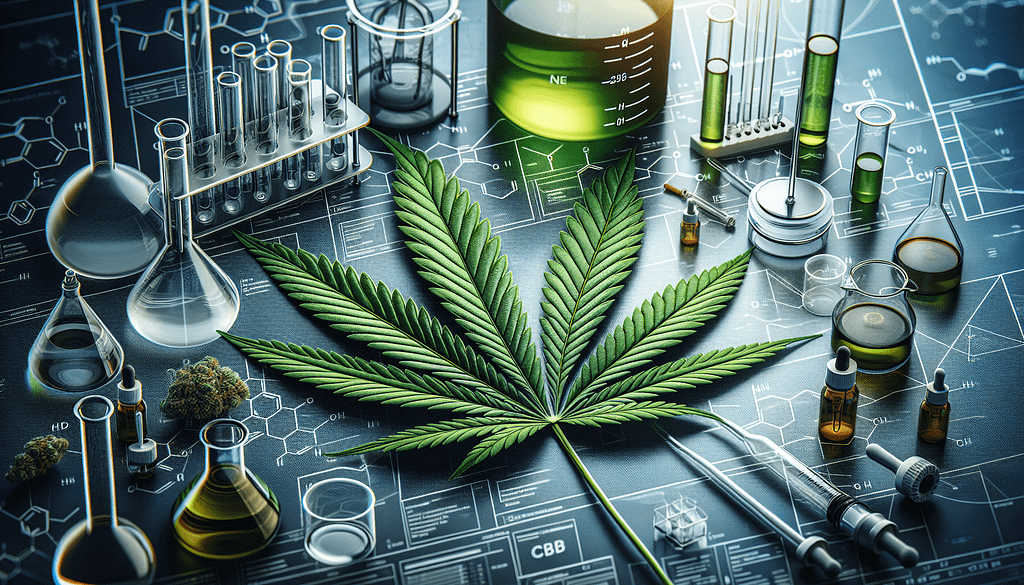As an Amazon Associate I earn from qualifying purchases.
Understand the pros & cons of CO2, solvent, olive oil, dry ice, and steam distillation for extracting CBD. Make informed choices for purity, potency, & safety of CBD products.
Understanding CBD Extraction Methods
CBD (cannabidiol) has become increasingly popular for its potential health benefits, ranging from pain relief to anxiety reduction. However, not all CBD products are created equal. The efficacy, safety, and quality of CBD largely depend on its extraction method. When you’re sifting through countless products and wondering which one to choose, having a grasp of the extraction methods can be a game-changer. This article aims to clarify the most common CBD extraction methods, their pros and cons, and why they matter.

Why Extraction Matters
Understanding the basics of CBD extraction methods is essential for several reasons. The method used can affect the purity, potency, and overall quality of the final product. Some methods preserve the natural compounds found in the hemp plant better than others, resulting in a richer, more effective product. Meanwhile, other techniques may involve hazardous chemicals that could pose health risks. By understanding these different extraction methods, you can make informed decisions about the CBD products you choose to use.
What is CBD?
Before diving into extraction methods, it’s crucial to understand what CBD is. CBD, or cannabidiol, is one of over 100 cannabinoids found in the Cannabis sativa plant. Unlike THC (tetrahydrocannabinol), CBD does not have psychoactive effects, meaning it doesn’t get you “high.” Instead, it’s praised for its potential therapeutic effects, such as reducing inflammation, alleviating pain, and treating anxiety and seizures.
Types of CBD Products
There are various types of CBD products available in the market, and they can be broadly categorized into three types based on their cannabinoid content:
Full-Spectrum CBD
Full-spectrum CBD contains all the cannabinoids, terpenes, and other natural compounds found in the hemp plant, including a small amount of THC (usually less than 0.3%). The idea is that these compounds work together synergistically, creating what’s known as the “entourage effect,” which may enhance the overall effectiveness.
Broad-Spectrum CBD
Broad-spectrum CBD is similar to full-spectrum CBD, except that it undergoes an additional extraction process to remove all the THC. This type is ideal for those who want to benefit from the entourage effect without consuming any THC.
CBD Isolate
CBD isolate is the purest form of CBD, containing about 99% cannabidiol and no other cannabinoids or terpenes. While it lacks the entourage effect, it’s a good option for those who prefer to avoid other cannabis compounds completely.
The Science Behind CBD Extraction
The extraction process is essentially the method used to separate CBD and other valuable compounds from the hemp plant material. Each extraction method aims to pull out as many beneficial compounds as possible while limiting the infiltration of unwanted substances, such as fats, chlorophyll, and other plant impurities. The final goal is to produce a clean, high-quality, and potent CBD product.

CBD Extraction Methods
Several extraction techniques are employed to obtain CBD from the hemp plant. Each method has its own set of benefits and drawbacks, and the choice of extraction method can significantly influence the product quality.
CO2 Extraction
CO2 extraction is regarded as the gold standard in the industry due to its efficiency, safety, and capability to produce high-quality CBD extracts. This method uses carbon dioxide in its supercritical state (between a gas and a liquid) to pull CBD and other compounds from the hemp plant.
Steps Involved in CO2 Extraction
- Supercritical CO2 is created: CO2 gas is compressed and cooled to its supercritical state.
- Passing through the plant material: The supercritical CO2 is passed through the hemp plant to extract cannabinoids, terpenes, and other compounds.
- Separation: The extracted solution is then passed through a separator to divide the CO2 and the desired compounds.
- Collection: The high-quality CBD extract is collected, and the CO2 is recycled for future use.
Pros and Cons of CO2 Extraction
- Pros:
- High purity and potency.
- No harmful residual solvents.
- Environmentally friendly due to CO2 recycling.
- Can extract a wide range of cannabinoids and terpenes.
- Cons:
- Expensive and complex equipment.
- Requires specialized training to operate.
Solvent Extraction
Solvent extraction employs liquid solvents such as ethanol, butane, propane, or alcohol to extract CBD from the hemp plant. This method is straightforward but comes with its own set of challenges.
Steps Involved in Solvent Extraction
- Soaking the plant material: The hemp plant is soaked in the solvent to dissolve the cannabinoids and terpenes.
- Evaporation: The solvent is then evaporated to leave behind a concentrated CBD extract.
- Purification: The final product undergoes additional steps to remove any residual solvents and unwanted compounds.
Pros and Cons of Solvent Extraction
- Pros:
- Cost-effective and straightforward.
- Requires less complex equipment compared to CO2 extraction.
- Efficient for large-scale production.
- Cons:
- Potentially harmful residual solvents.
- Lower purity and potency compared to CO2 extraction.
- Risk of fire or explosion due to flammable solvents.
Olive Oil Extraction
Olive oil extraction is a traditional method that has been used for centuries. This technique is simple and safe but is generally less efficient compared to modern methods like CO2 or solvent extraction.
Steps Involved in Olive Oil Extraction
- Decarboxylation: The hemp plant material is heated to activate the cannabinoids.
- Mixing with olive oil: The plant material is then mixed with olive oil and heated to extract the cannabinoids.
- Filtration: The mixture is filtered to separate the plant material from the infused olive oil.
Pros and Cons of Olive Oil Extraction
- Pros:
- Simple and safe procedure.
- No harmful chemicals involved.
- Suitable for small-scale, DIY production.
- Cons:
- Low potency and short shelf life.
- Requires large amounts of olive oil.
- Final product is less concentrated.
Dry Ice Extraction
Dry ice extraction is another method that’s often used by DIY enthusiasts and small-scale producers. This technique involves using dry ice (solid carbon dioxide) to freeze the trichomes of the hemp plant, making them easier to separate.
Steps Involved in Dry Ice Extraction
- Preparation: The hemp plant material is broken down into smaller pieces.
- Freezing: Dry ice is applied to the plant material to freeze the trichomes.
- Shaking: The frozen trichomes are then separated by shaking the plant material through a mesh bag.
- Collection: The trichomes are collected and can be further processed to create a CBD extract.
Pros and Cons of Dry Ice Extraction
- Pros:
- Quick and simple process.
- No harmful chemicals involved.
- Produces a relatively pure product.
- Cons:
- Less efficient compared to CO2 and solvent extraction.
- Requires manual labor and attention to detail.
- Not suitable for large-scale production.
Steam Distillation
Steam distillation is a traditional method that’s often used for extracting essential oils but can also be employed for CBD extraction. This technique uses steam to separate the CBD and other desirable compounds from the hemp plant.
Steps Involved in Steam Distillation
- Steam generation: Steam is produced and passed through the hemp plant material.
- Condensation: The steam carries the cannabinoids, which are then condensed back into a liquid.
- Collection: The liquid is collected, and the CBD extract is separated from the water.
Pros and Cons of Steam Distillation
- Pros:
- No harmful solvents used.
- Relatively simple and straightforward.
- Suitable for extracting a variety of plant compounds.
- Cons:
- Lower efficiency and potency.
- Requires a large amount of plant material.
- Risk of overheating, which can degrade cannabinoids.
Choosing the Right Extraction Method
When you’re choosing a CBD product, it’s essential to consider the extraction method used. High-quality, reputable brands will often disclose their extraction process on their packaging or website. Generally, CO2 extraction is the preferred method due to its safety, efficiency, and ability to produce high-purity CBD extracts. However, solvent extraction and other methods can also be effective, especially if you’re aware of the potential drawbacks.
The Role of Third-Party Testing
Regardless of the extraction method used, it’s crucial to look for CBD products that have undergone third-party testing. Independent labs can verify the cannabinoid content, potency, and purity of the product, as well as test for any potential contaminants such as pesticides, heavy metals, or residual solvents. Third-party testing provides an added layer of transparency and assurance, ensuring that you’re getting a safe and effective product.
Final Thoughts
Understanding CBD extraction methods is key to navigating the crowded CBD market and making informed choices. Each extraction method has its pros and cons, influencing the purity, potency, and safety of the final product. By choosing products from reputable brands that use high-quality extraction methods and offer third-party testing, you can confidently enjoy the potential benefits of CBD.
Thank you for taking the time to read this article! If you found this information helpful, please clap for the article, leave a comment below with any questions or thoughts, and subscribe to my Medium newsletter for updates on the latest in CBD and wellness.
Disclosure: This story incorporates AI assistance for content creation.
Amazon and the Amazon logo are trademarks of Amazon.com, Inc, or its affiliates.
